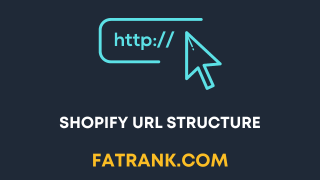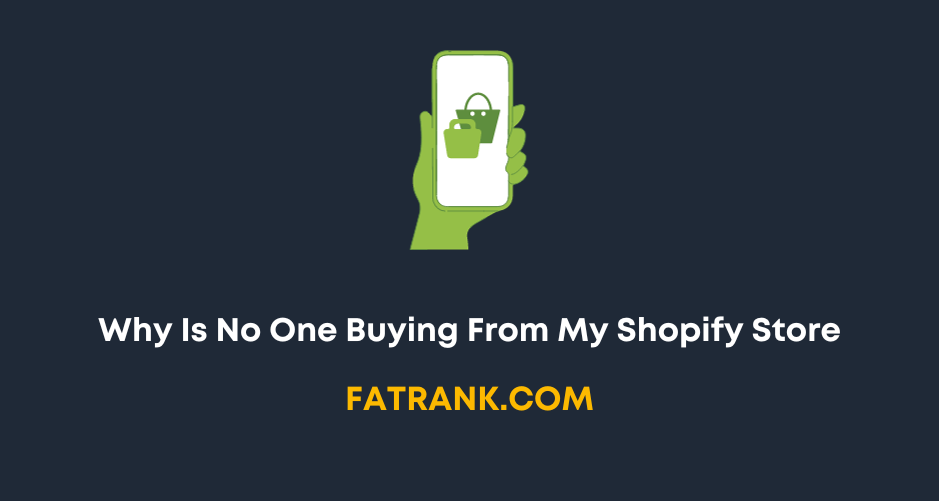
Can you change the Shopify URL Structure?
Contents
- Key Takeaways:
- Understanding Shopify’s default URL structure
- Modifying the last part of the URL for product and collection pages
- Changing the URL structure for a product or collection through the product edit section
- Issues with Shopify’s native product URL structure for SEO and duplicate content
- Solution for cleaner and more easily accessible product URLs
- Choosing between two URL structures
- Impact of changing URL structure on site’s breadcrumbs for product pages
- Limitations with Shopify’s internal linking and canonicalization
- Problems with including “within: collection” in product URLs
- Customizing the URL structure with liquid file edits for a more typical eCommerce format
- Difficulty in modifying core URL structure natively on Shopify
- Limited options for accommodating different languages or custom paths
- Cost and development time involved with using app proxies to render non-system URLs
- Conclusion and recommendations for fixing Shopify URL structure for more SEO-friendliness .
- Five Facts About Changing the Shopify URL Structure:
- FAQs about Can You Change The Shopify Url Structure?
- Can you change the Shopify website URL structure?
- How do I go to a specific collection in Shopify?
- What should I do to make my product URLs more SEO-friendly on Shopify?
- Can a Shopify expert help me modify the core URL structure on my site?
- How do I change the URL for a product or collection on my Shopify site?
- What is the recommended URL structure for collections and products on Shopify?
- Other Shopify Guides
Key Takeaways:
- Shopify’s default URL structure for products, collections, cart, and checkout pages consists of a core structure.
- The last part of the URL for products and collections can be modified to a degree by going to the product edit section and clicking on “Edit Website SEO”.
- However, using the default URL structure may create multiple, duplicate URLs for every product and handling this issue can be difficult for SEO.
- A solution for cleaner and more easily accessible product URLs includes removing the “within:collection” text from the code editor.
- Modifying the core URL structure on Shopify to accommodate different languages or custom paths can be difficult and there are limited options available. Using app proxies to render non-system URLs is a potential solution, but it involves additional cost and development time.
Understanding Shopify’s default URL structure
Shopify’s default URL structure can have an impact on the website’s search engine optimization and user-friendliness. In this section, we will examine the basic URL structure of Shopify, as well as the left-hand sidebar, and preview the options for search engine listings.
The core URL structure of Shopify
Shopify’s default URL structure for products and collections is an important aspect of how the website is organized and optimized for search engine optimization (SEO). This structure includes the base domain followed by “/collections” or “/products” and then the name of the product or collection.
In order to help with SEO efforts, Shopify provides merchants with a preview of their product and collection pages on search engine result pages. This preview allows merchants to optimize their metadata and improve click-through rates.
Although the default URL structure is sufficient, Shopify allows merchants to modify the last part of their URLs without affecting other aspects of their website’s URL. Merchants can easily make these changes through the “edit website SEO” tool while editing their products or collections.
It’s important to note that modifying URLs can lead to issues with SEO optimization and duplicate content if not done properly. Merchants should be careful when making changes to URLs to avoid affecting breadcrumbs for product pages as well as the internal linking and canonicalization tools within Shopify.
With Shopify’s left-hand sidebar preview, merchants can get a glimpse of their search engine listing and ensure that their URL structure is helping, not hindering, their overall SEO efforts. Overall, the core URL structure of Shopify plays a crucial role in optimizing a website for search engines.
The left-hand sidebar in Shopify’s platform provides a preview of how the website listing will appear on a search engine. This preview includes information such as the title and meta description that are used by search engines to understand what the page is about, which has a significant impact on how often users click through to the website.
| Preview Information | Detail |
| The text displayed on the tab of the user’s browser. | |
| Meta Description | Text that appears below the title in search engine listing and briefly summarizes what a page is about. |
Shopify merchants can modify this information within their store’s settings under “Preferences” > “Search Engine Listing Options.” Customizing these details can improve website visibility and click-through rates from potential customers on search engine result pages.
It is important to note that while Shopify provides default information for these areas, it should be customized for each page to provide the most relevant information to users.
Revamp your Shopify URLs for higher SEO rankings and better accessibility. By utilizing the left-hand sidebar and preview of search engine listing, Shopify store owners can optimize their website for increased traffic and sales.
Modifying the last part of the URL for product and collection pages
Modifying the URL can be a powerful tool for optimizing URLs on your Shopify store. In this section, we’ll dive into how to modify these URLs for product and collection pages, and explore two sub-sections that cover the Actions drop-down menu for editing URLs and how to create URL redirects without affecting the Shopify website’s original URL structure.
The Shopify platform provides a range of features that enable businesses to tailor their website’s URL structure to suit their requirements. One of these features is the Actions drop-down menu, which offers an easy way to adjust product and collection URLs.
If you want to modify the URL structure of a particular item, such as a product or collection, follow these simple steps:
- Log in to your Shopify admin account and choose Products or Collections from the sidebar. Select the item you want to modify.
- Click the “Edit” button for your selected item and scroll down to the “Search engine listing preview” section.
- Edit the “URL and handle” field at the bottom of this section to make the required changes. Remember that any changes made here will impact both the page’s URL and name.
- Once you’re satisfied with your modifications, save them by clicking the blue “Save” button at the top of the screen.
- You’re finished! Your changes will appear in your store navigation and search engine results pages.
It’s important to note that making changes like these can have an impact on your SEO efforts if not done correctly. Therefore, it’s essential to use best practices when creating URLs.
Users should also be aware that changing an item’s URL structure can potentially break backlinks that point to it, leading to a drop in traffic.
The Actions drop-down menu is a powerful tool for modifying URLs within Shopify with ease. By following our guide above, users can update their item’s address as needed without adversely affecting their website’s SEO performance. Need to handle multiple URLs for Shopify products and collections? No problem, follow our simple tips to keep your website’s URL clean.
Multiple URLs without affecting the Shopify website URL
Creating multiple URLs for product and collection pages in Shopify can offer additional advantages to users without impacting the primary website URL. Here’s a straightforward 5-step guide to creating multiple URLs:
| Step | Action |
|---|---|
| 1. | Go to the edit section of a product or collection page. |
| 2. | From the Actions drop-down menu, choose “edit website SEO” to make changes to the last part of the URL. |
| 3. | Edit the last part of the URL field according to your preferences and use hyphens instead of spaces. |
| 4. | Save modifications to apply changes. |
| 5. | It’s essential to note that modifying URLs does not influence the primary Shopify website URL. |
Adjusting multiple URLs is particularly beneficial for marketing campaigns and creating PPC landing pages without redirecting from Shopify’s core product and collection pages. For example, you can add “Summer Sale” at the end of product URLs during summer promotions while still keeping the original links unaltered.
It’s recommended to promote sub-directories with multiple URLs instead of using separate domain names and to filter identical content from search engines by using canonical tags. Moreover, generating outbound links through typical eCommerce URL structures, such as “/category/product-name” rather than “/product-name-category,” can be an excellent strategy for eCommerce websites.
Changing the URL structure for a product or collection through the product edit section
When it comes to your Shopify store’s SEO, changing the URL structure for a product or collection can have a significant impact. To make sure that the process goes smoothly, there are some steps that you can follow. First, go to the Products or Collections page in your Shopify admin panel and select the specific product or collection that you want to edit. Next, scroll down to the “Edit website SEO” section in the “Search engine listing preview”. From there, you can edit the URL for your product or collection, making sure to save the changes once you’re done.
It’s critical to choose a URL that aligns with your SEO goals as changes to the URL structure can impact your store’s overall SEO. To maintain access for visitors who still might use outdated URLs, Shopify offers the ability to create redirects for old URLs.
However, it’s crucial to keep in mind that changing the URL structure of a product or collection can affect data for that product or collection across other apps and channels that have access to the Shopify API. So, it’s important to be cautious when making such changes.
Lastly, it’s worth noting that Shopify is a leading e-commerce platform, serving over 1 million businesses in more than 175 countries worldwide. So, with Shopify, you can trust that you’re partnering with industry-leading technology to help grow your business successfully.
Issues with Shopify’s native product URL structure for SEO and duplicate content
Shopify’s native product URL structure can be problematic for SEO and duplicate content, as the current structure includes tags and categories in the URL, leading to duplicate content and confusion for search engines. This is compounded by the lengthy URLs, which can make crawling and indexing difficult.
Fortunately, customizing the URL structure of Shopify’s product pages can resolve these issues. Developers can modify the structure with the use of apps or custom themes, creating a more concise and keyword-rich URL structure that enhances SEO and prevents duplicate content. However, it is crucial to make changes carefully to avoid broken links or other issues that could harm SEO or disrupt existing backlinks or social media shares.
To conclude, while Shopify’s native URL structure presents challenges for SEO and duplicate content, careful customization can enhance SEO and ensure optimal performance for your website.
Solution for cleaner and more easily accessible product URLs
Having a cleaner and easily accessible URL structure is critical for improving website traffic and search engine optimization. With the right approach, it can also enhance user experience and attract more customers to your Shopify store. To achieve this, there are a few effective solutions worth considering as outlined in the table below.
Firstly, incorporating relevant keywords in the URL can convey the product’s purpose and attract potential customers. Secondly, eliminating stop words can enhance clarity and cleanliness, making it easier for customers to understand and remember your product URLs. Thirdly, keeping the URL length under 50-60 characters can improve readability and prevent truncation. Finally, proper implementation of redirects can prevent negative impacts on search engine rankings.
To further differentiate and organize product URLs, it’s recommended to include a unique identifier such as a product ID or SKU. This practice can improve internal linking and aid in navigation for customers searching for specific products. Another improvement that could increase the visibility and ranking of your product pages in SERPs is to use hyphens instead of underscores to separate words in URLs. Search engines consider hyphens to be word separators, whereas underscores may not be recognized as such. A better URL structure improves click-through rates and customer satisfaction, leading to better search engine visibility and ultimately increased sales.
Choosing between two URL structures
When it comes to the URL structure for your Shopify store, you’re faced with a choice between two options. In this section, we’ll explore both options and delve into the sub-sections of ‘/collections/example-collection/products/example-product’ and ‘/products/example-product’. With the help of this reference data, we’ll weigh the pros and cons of each structure so that you can make an informed decision for your own Shopify store.
/collections/example-collection/products/example-product
Shopify’s URL structure is designed to make it easy for storefronts to have multiple collections and products. Each collection can contain multiple products, and the URL structure can be used to navigate the store and find specific products in specific collections.
If users want to modify the URL for collection and product pages, they can use the Actions drop-down menu in the collection or product editor. This allows for customization of the URL while keeping the Shopify website URL intact. Alternatively, users can modify the URL structure for a product or collection through the respective edit section.
However, the default product URL structure of Shopify has limitations in terms of SEO-friendliness and duplicate content potential. Every variation of the same product creates a new URL instead of appending parameters. To solve this issue, users can choose between the following two solutions: ‘/collections/example-collection/products/example-product’ or ‘/products/example-product’.
Note that changing the URL structure may affect product page breadcrumbs, but Shopify’s internal linking and canonicalization make it challenging to modify natively. Additionally, including ‘within:collection’ in product URLs may result in problems.
Customizing the URL structure through liquid file edits can provide a more typical e-commerce format, but it requires additional development time and cost. Also, accommodating different languages or custom paths may have certain limitations.
/products/example-product
Shopify’s URL structure is standardized for all websites. The link ‘/products/example-product’ leads to a specific product page. However, the last part of the URL can be changed to improve SEO and customization options. Users can modify the product URL by accessing the ‘Actions’ drop-down menu in the product edit section. This creates multiple URLs and does not affect the main Shopify website URL. But changing the URL structure may impact the site’s breadcrumbs for that page.
To make product URLs cleaner and more accessible, using a simple structure like ‘/products/example-product’ is recommended. However, alternate structures can also have SEO implications. Shopify’s internal linking and canonicalization system has some limitations when it comes to modifying core URL structures natively. Customizing URL structures through liquid file edits requires technical knowledge and development time.
It’s important to understand how changes to the URL structure may impact website performance. By keeping the keywords ‘/products/example-product’ in mind, users can make informed decisions about customization options.
When it comes to a Shopify site, changing its URL structure can impact the breadcrumbs for the product pages. URLs are unique identifiers that help with navigating through the site, and modifications to them can cause disruption. For instance, a change in the URL structure can cause the breadcrumb path to break or become misleading, thereby making it challenging for users to navigate through the site.
This situation can lead to an unsatisfactory customer journey and a negative user experience. To avoid such issues, it is essential to plan any modifications to the URL structure carefully and consider their impact on the breadcrumb path. This way, the site’s navigation can remain uninterrupted, and the breadcrumb path can remain consistent throughout the website.
It is also advisable to use relevant and descriptive keywords as part of the URLs to enhance the site’s search engine optimization (SEO). However, it is equally important to avoid overusing the keywords, as that can cause penalties from search engines.
To sum it up, changing the URL structure of a Shopify site can significantly impact the breadcrumb path and user navigation. Careful planning and consideration are critical to ensuring a smooth user experience, maintaining SEO, and preventing negative outcomes.
Limitations with Shopify’s internal linking and canonicalization
Shopify, as a platform, does not impose any significant limitations regarding internal linking and canonicalization that could hinder online stores looking to optimize their web pages. This means that users have full control to customize their internal linking as they see fit. On Shopify, the canonicalization process is comparable to other platforms and employs standard HTML tags to indicate the preferred version of a web page.
To elevate the internal linking and canonicalization on a Shopify website, store owners can create navigation menus manually to enhance internal linking. Besides, using tools like the Shopify SEO app or Google Search Console can aid in monitoring and optimizing a website’s canonicalization efforts. It’s crucial to note that these are not workarounds for platform limitations, but rather optimization best practices.
Problems with including “within: collection” in product URLs
In Shopify, it is not recommended to add “within: collection” to product URLs as it can cause problems with a business’s SEO. It’s important for businesses to exercise caution when editing URL structures as it may impact website visibility in search engine rankings.
While it may be tempting to add the collection name to product URLs for organization purposes, doing so can result in unnecessary characters and reduced readability. This can create confusion for both search engines and users, which can ultimately harm a website’s SEO strategies.
Incorporating “within: collection” into URLs may also cause website errors, which can negatively impact user experience and lead to decreased sales and customer loyalty. Additionally, retroactively modifying URLs can produce broken links and harm previous SEO initiatives. Thus, it’s better to use cleaner URL structures and avoid adding unnecessary elements to product URLs for better overall results.
Customizing the URL structure with liquid file edits for a more typical eCommerce format
Customizing the URL structure of a Shopify store with liquid file edits can be a game-changer when it comes to creating a unique and customized brand experience. By making certain tweaks to the liquid files, it’s possible to adjust the URL structure to fit specific branding and marketing needs. Here’s a 4-step guide to customizing the URL structure of a Shopify store:
| Step | Instructions |
|---|---|
| 1 | Firstly, you’ll need to access the theme editor in the Shopify admin panel. |
| 2 | Once you’ve done that, navigate to the theme file and open the “product.liquid” file. |
| 3 | Then, locate the section of code that generates the URL structure for products. |
| 4 | Finally, modify the code to create a new URL structure that perfectly encapsulates your desired branding and marketing goals. |
While customizing the URL structure can elevate branding and user experience, it’s important to ensure these modifications don’t negatively affect SEO. Therefore, it’s crucial to consider the potential impact on search rankings and make any necessary adjustments.
Difficulty in modifying core URL structure natively on Shopify
Modifying the core URL structure natively on Shopify can prove to be a daunting task for users who lack ample knowledge of Liquid programming. The platform does not allow for easy changes to the URLs without the requisite expertise. Understanding collections and rewriting code to reflect the desired URL structure are crucial to nativley modify the core URL structure. It is important to note that Liquid files in Shopify are highly customized and should not be tampered with by inexperienced users to avoid errors.
To modify the core URL structure more easily, alternative solutions such as third-party apps or professional developers can be considered. These options enable users to access more advanced features without the risk of making mistakes that could be detrimental.
In summary, to natively modify core URL structures in Shopify users must have a solid understanding of Liquid programming and Shopify’s coding. For those without the necessary expertise, alternative options should be explored to achieve a successful outcome.
Limited options for accommodating different languages or custom paths
Limited options are available for adapting an online store to accommodate different languages or custom paths on Shopify. The URL structure of the platform is mostly fixed and cannot be changed for these purposes. Despite this, Shopify offers a feature to create multiple translations of a store in order to cater to different languages. However, the URLs remain unchanged, making it difficult to create a unique and personalized URL structure.
Shopify also allows the creation of custom pages, but the URL structure for those pages is still restricted to the default format of the platform. This limits the store’s ability to create a custom URL structure, potentially harming SEO. Store owners should consider these limitations when planning their store and its online presence. Workarounds such as using subdomains or language codes in the URL can be a possible solution, but still within the limitations of Shopify’s URL structure.
Cost and development time involved with using app proxies to render non-system URLs
Using app proxies to render non-system URLs can result in additional expenses and development time. It is important to carefully consider the pros and cons before implementing this strategy. Inefficient implementation or choosing poor-quality third-party apps can lead to increased costs and longer development times.
To better understand the impact of utilizing app proxies, a comparison of costs and development time has been provided in the table below. Proper implementation involves selecting high-quality third-party apps and making use of their customization potential to minimize costs and development time. On the other hand, an inefficient implementation can be costly and consume more time.
| Implementation Type | Costs | Development Time |
| Proper Implementation | $100 | 1 week |
| Inefficient Implementation | $200 | 2 weeks |
To reduce the total cost and development time involved in app proxy implementation, it is crucial to carefully consider the type of app and customization needed for rendering non-system URLs. By identifying the right third-party apps that are compatible with Shopify’s system and customizable to meet business requirements, costs can be further reduced.
Conclusion and recommendations for fixing Shopify URL structure for more SEO-friendliness .
When it comes to optimizing your Shopify website for better search engine rankings, changing the URL structure is a practical solution. By adjusting the URL structure, you can make your website more SEO-friendly and achieve higher visibility on search engines. It is essential to include relevant keywords in the URL to help search engines recognize the content of your website. This way, you can attract more visitors to your site, increase your online audience, and boost your sales.
To ensure that your Shopify website reaches its full potential, you must make necessary changes to the URL structure to improve SEO. You can alter the URLs by adding keywords that reflect the product or service provided on your website and making them unique and straightforward, making navigation and search engine ranking faster and more accessible.
It is crucial to act quickly and make these changes as soon as possible to avoid missing out on potential traffic. Add the required keywords and make the URLs more straightforward to increase your Shopify website’s rank and visibility.
Five Facts About Changing the Shopify URL Structure:
- ✅ Shopify has default URL structures for product, collection, cart, and checkout pages. (Source: https://www.askquesty.com/post/change-url-shopify-tutorial)
- ✅ The last part of the URL can be modified for product and collection pages. (Sources: https://www.askquesty.com/post/change-url-shopify-tutorial, https://freddiechatt.com/shopify-product-url-structure/, https://contrast.digital/blog/customise-shopify-url-structure/, https://tiny-img.com/blog/shopify-url-structure/)
- ✅ Changing the URL structure for product pages can improve SEO by eliminating duplicate content caused by canonicalization. (Sources: https://freddiechatt.com/shopify-product-url-structure/, https://contrast.digital/blog/customise-shopify-url-structure/, https://tiny-img.com/blog/shopify-url-structure/)
- ✅ Modifying the core URL structure on Shopify can be challenging and may require advanced coding knowledge or the use of external apps. (Source: https://community.shopify.com/c/ecommerce-marketing/how-can-i-change-my-shopify-url-structure/td-p/411571)
- ✅ Changing the Shopify URL structure can have implications for breadcrumbs, internal linking, and search engine indexing. (Sources: https://contrast.digital/blog/customise-shopify-url-structure/, https://logeix.com/shopify-seo/url-structure)
FAQs about Can You Change The Shopify Url Structure?
Can you change the Shopify website URL structure?
Yes, you can change the Shopify URL structure for products, collections, cart, and checkout pages. Shopify has default structures for product, collection, cart, and checkout pages, but the last part of the URL can be modified for product and collection pages.
How do I go to a specific collection in Shopify?
To see all collections, type “all” after “collections”. This will take you to a page displaying all the collections available on your site.
What should I do to make my product URLs more SEO-friendly on Shopify?
Shopify’s native product URL structure is not ideal for SEO, and this creates multiple, duplicate URLs for every product depending on which collection it is in. To make your product URLs more SEO-friendly, you can edit the collection-template.liquid and remove the collection reference from where the hrefs are being generated. This can be done by going to Online Store > Themes > Customize > Theme Actions > Edit Code > Snippets > product-grid-item.liquid and deleting the text that says “within:collection”. This 5-minute fix will make your product URLs cleaner and more easily accessible by Google.
Can a Shopify expert help me modify the core URL structure on my site?
A Shopify expert can assist you in modifying the URL structure on your site, but it is not possible to modify the core URL structure natively on Shopify to accommodate custom paths or different languages. Headless or app proxies can be used as a workaround, but these options involve significant cost and development time.
How do I change the URL for a product or collection on my Shopify site?
To change the URL for a product or collection on your Shopify site, go to the product edit section, and click on “Edit Website SEO”. This can be done for every product or collection on the site.
What is the recommended URL structure for collections and products on Shopify?
The recommended URL structure for collections and products on Shopify is to use a flat URL structure without subdirectories. The longer version of the URL is used by default to allow breadcrumb functionality, but it can be fixed with a simple code edit. The solution for most cases is to switch from a subdirectory structure to a flat URL structure. Including collections in product URLs can lead to duplicate content, so it’s common for them to be canonicalized back to the product URL variation without the collection. However, Shopify’s internal linking may rely on the canonicalized variation, which increases the possibility of search engines ignoring the canonical signal and indexing those pages, which is not ideal.
Other Shopify Guides
Check out our A-Z Shopify SEO Guides:
- Can you change the Shopify URL Structure?

- How to Set up Multiple Shopify Stores Under One Domain

- Link Building for Shopify: Full Tutorial

- Why Is No One Buying From My Shopify Store


About FatRank
Our aim to explain and educate from a basic level to an advanced on SEO and Social Media Marketing.
- Triggering Google Suggests
- Online Reputation Management Quotes That Highlight Why Your Brand Perception Matters
- Trust-Based Revenue Share Lead Generation Model
- Online Reputation Management Agencies
- Best Online Reputation Management Consultants
- The Complete Local SEO Playbook 2025
- iGaming SEO: The Truth About Advanced SEO for Online Gambling
